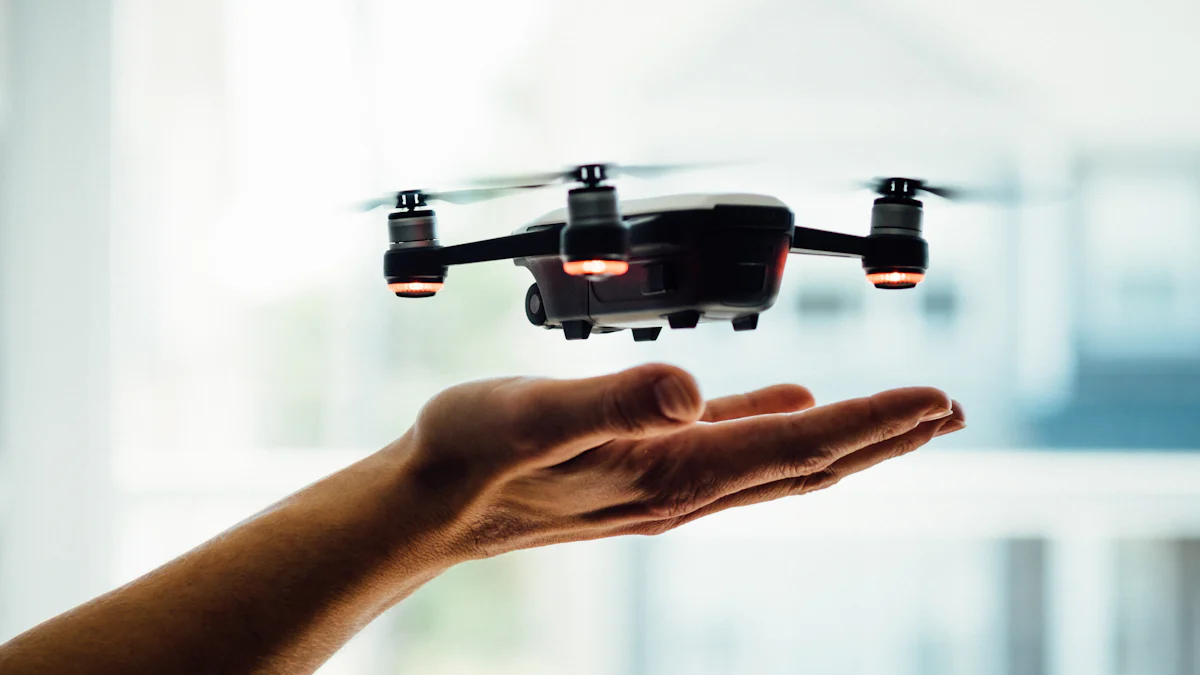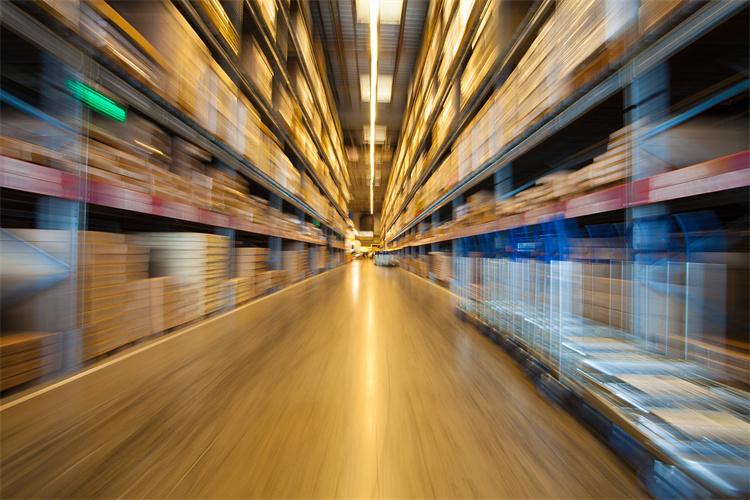Smart Logistics and Digital Supply Chains: Predicting the Next 10 Years

Logistics and supply chains play a crucial role in the global economy, with the industry valued at over 8.4 trillion euros in 2021. The sector is expected to exceed 13.7 billion euros by 2027. Rapid technological advancements are revolutionizing these fields. Technologies like AI, IoT, and blockchain are transforming logistics operations, making them more efficient and transparent. The purpose of this blog is to predict future trends in Smart Logistics and digital supply chains over the next decade.
The Current State of Logistics and Supply Chains
Traditional Logistics vs. Smart Logistics
Definition and Key Differences
Traditional logistics involves the management of goods from origin to destination using manual processes. This approach relies heavily on human intervention for tasks such as inventory management, transportation, and warehousing. Traditional logistics often faces challenges like inefficiencies, delays, and lack of transparency.
Smart Logistics, on the other hand, leverages advanced technologies to optimize logistics operations. This modern approach integrates Internet of Things (IoT), Artificial Intelligence (AI), and data analytics to enhance efficiency and accuracy. Smart Logistics enables real-time tracking, predictive maintenance, and automated decision-making, significantly reducing operational costs and improving service quality.
Current Technologies in Use
Traditional logistics primarily uses basic tools such as spreadsheets, manual tracking systems, and conventional vehicles. These methods often result in errors and inefficiencies due to the lack of automation and real-time data.
In contrast, Smart Logistics employs a range of advanced technologies:
IoT: Sensors and devices collect real-time data on the location and condition of goods.
AI and Machine Learning: Algorithms analyze data to predict demand, optimize routes, and automate warehouse operations.
Blockchain: Ensures transparency and security in transactions and supply chain processes.
Robotics: Automates repetitive tasks in warehouses, increasing speed and accuracy.
Digital Supply Chains
Definition and Importance
Digital supply chains utilize digital technologies to connect and manage all aspects of the supply chain. This approach transforms traditional linear supply chains into dynamic, interconnected networks. Digital supply chains enhance visibility, agility, and collaboration among stakeholders.
The importance of digital supply chains lies in their ability to respond quickly to market changes. By leveraging real-time data and advanced analytics, companies can make informed decisions, reduce risks, and improve customer satisfaction. Digital supply chains also support sustainability initiatives by optimizing resource use and reducing waste.
Current Digital Tools and Platforms
Several digital tools and platforms are revolutionizing supply chain management:
Enterprise Resource Planning (ERP) Systems: Integrate various business processes, providing a unified view of operations.
Supply Chain Management (SCM) Software: Manages end-to-end supply chain activities, from procurement to distribution.
Transportation Management Systems (TMS): Optimizes transportation planning and execution.
Warehouse Management Systems (WMS): Enhances inventory control and warehouse operations.
Predictive Analytics Tools: Use historical data to forecast demand and optimize inventory levels.
Juslink System: JusLink offers full-chain visibility, allowing clients to monitor all nodes in the supply chain in real-time. This visibility helps in risk prevention and enhances overall supply chain competitiveness.
These tools enable companies to achieve greater efficiency, reduce costs, and enhance overall supply chain performance.
Emerging Technologies in Smart Logistics

Internet of Things (IoT)
Applications in Logistics
The Internet of Things (IoT) revolutionizes logistics by enabling real-time tracking and monitoring of goods. Sensors attached to shipments provide data on location, temperature, and condition. This information helps companies ensure product quality and timely delivery. IoT devices also facilitate inventory management by offering precise stock levels, reducing the risk of overstocking or stockouts.
Benefits and Challenges
IoT offers numerous benefits for Smart Logistics. Real-time data collection enhances visibility and control over logistics operations. Companies can optimize routes, reduce fuel consumption, and improve delivery times. IoT also aids in predictive maintenance, preventing equipment failures and minimizing downtime.
However, challenges exist. Implementing IoT requires significant investment in infrastructure and technology. Data security remains a concern, as connected devices can be vulnerable to cyber-attacks. Additionally, integrating IoT with existing systems can be complex and time-consuming.
Artificial Intelligence and Machine Learning
Predictive Analytics
Artificial Intelligence (AI) and Machine Learning (ML) play crucial roles in Smart Logistics. Predictive analytics uses historical data to forecast future trends. AI algorithms analyze patterns in demand, helping companies adjust production and inventory levels accordingly. This reduces waste and ensures that products are available when needed.
Automation and Robotics
Automation and robotics enhance efficiency in logistics operations. AI-powered robots handle repetitive tasks in warehouses, such as picking and packing items. This speeds up processes and reduces human error. Autonomous vehicles and drones, guided by AI, offer innovative solutions for transportation and delivery. These technologies improve accuracy and reduce labor costs.
And JUSDA automates all aspects of its business, including warehousing, logistics, and data management. Key elements of JUSDA's automation include:
Cloud Warehouse: JUSDA's cloud warehouse service provides automated warehousing and intelligent transfer through a big data platform. This service includes unified management of Vendor Managed Inventory (VMI) and Customer Managed Inventory (CMI), offering personalized VMI edge-of-production-line services and seamless integration with clients' systems through their proprietary VMI management system.
JusLink Intelligent System Platform: This platform supports JUSDA's own and external customers' information systems for supply chain management and operational services. It enables real-time collaboration and integration of suppliers, manufacturers, service providers, and customers, providing precise business decision analysis and efficient resource utilization. The platform leverages big data analysis, cloud platform construction, and IoT information system integration to offer comprehensive information analysis and collaborative operation.

SMART JusLink
Supply Chain Management Solution
Blockchain Technology
Enhancing Transparency and Security
Blockchain technology ensures transparency and security in logistics. Each transaction gets recorded in a decentralized ledger, making it tamper-proof. This enhances trust among stakeholders and reduces the risk of fraud. Blockchain also streamlines documentation processes, reducing paperwork and administrative costs.
Real-world Examples
Several companies have successfully implemented blockchain in their logistics operations. For instance, Maersk uses blockchain to track shipments and streamline customs procedures. Walmart employs blockchain to trace the origin of food products, ensuring safety and quality. These examples demonstrate the potential of blockchain to transform logistics.
Future Trends and Predictions
Increased Automation
Autonomous Vehicles and Drones
Autonomous vehicles and drones will revolutionize logistics. Companies will deploy self-driving trucks for long-haul transportation, reducing human error and increasing efficiency. Drones will handle last-mile deliveries, especially in urban areas. These technologies will enable faster and more reliable deliveries.
Impact on Workforce
Automation will impact the workforce significantly. Traditional roles in logistics will evolve. Workers will need to adapt to new technologies and acquire new skills. Training programs will become essential to help employees transition to tech-focused roles. The demand for tech-savvy professionals will rise.
Enhanced Data Analytics
Real-time Decision Making
Enhanced data analytics will transform decision-making processes. Companies will leverage real-time data to make informed decisions quickly. This will improve operational efficiency and reduce delays. Advanced analytics tools will provide insights into customer behavior and market trends, enabling better strategic planning.
Predictive Maintenance
Predictive maintenance will become a standard practice in logistics. AI algorithms will analyze data from IoT sensors to predict equipment failures before they occur. This will minimize downtime and reduce maintenance costs. Companies will achieve higher operational reliability and extend the lifespan of their assets.
Sustainability and Green Logistics
Eco-friendly Technologies
Eco-friendly technologies will play a crucial role in future logistics. Electric vehicles will replace traditional fuel-powered trucks, reducing carbon emissions. Renewable energy sources will power warehouses and distribution centers. Companies will adopt sustainable packaging materials to minimize environmental impact.
Regulatory Impacts
Regulatory impacts will drive the adoption of green logistics practices. Governments will implement stricter regulations to reduce carbon footprints. Companies will need to comply with these regulations to avoid penalties. Sustainability will become a key competitive advantage in the logistics industry.
Real-world Examples and Case Studies

Leading Companies in Smart Logistics
Innovations by Amazon
Amazon has revolutionized Smart Logistics with cutting-edge technologies. The company employs AI to optimize its supply chain, enhancing efficiency and reducing costs. AI algorithms predict demand patterns, ensuring optimal inventory levels. Amazon uses robotics extensively in its warehouses. Robots handle tasks such as picking and packing items, speeding up operations and minimizing errors.
Amazon also leverages IoT for real-time tracking of shipments. Sensors monitor the condition and location of goods, providing valuable data for logistics management. Blockchain technology ensures transparency and security in transactions. This technology helps streamline processes and reduce administrative burdens. Amazon's innovations set a high standard in the logistics industry.
Innovations by DHL
DHL has embraced Smart Logistics to improve service quality and operational efficiency. The company uses AI for route optimization, reducing delivery times and fuel consumption. Predictive analytics help DHL forecast demand and manage resources effectively. This approach minimizes waste and enhances customer satisfaction.
DHL employs IoT devices to track shipments in real-time. Sensors provide data on temperature, humidity, and location, ensuring the integrity of goods. The company also uses blockchain to enhance transparency and security in its supply chain. Blockchain reduces paperwork and speeds up customs procedures. DHL's commitment to innovation makes it a leader in Smart Logistics.
Successful Digital Supply Chain Implementations
Case Study: Walmart
Walmart has successfully implemented a digital supply chain to enhance efficiency and visibility. The company uses AI to analyze data and predict demand trends. This helps Walmart maintain optimal inventory levels and reduce stockouts. AI-driven insights enable better decision-making and resource allocation.
Walmart collaborates with IBM to leverage blockchain technology. Blockchain tracks and traces the movement of food products, ensuring safety and quality. This technology reduces paperwork and enhances data visibility. Walmart's digital supply chain improves operational efficiency and customer satisfaction.
Case Study: Maersk
Maersk has transformed its logistics operations through digital supply chain initiatives. The company uses IoT devices to monitor the condition and location of shipments. Real-time data from sensors helps Maersk ensure timely deliveries and product quality. IoT enhances visibility and control over logistics processes.
Maersk employs blockchain technology to streamline documentation and enhance security. Blockchain records transactions in a decentralized ledger, reducing the risk of fraud. This technology simplifies customs procedures and reduces administrative costs. Maersk's digital supply chain initiatives set a benchmark in the logistics industry.
The blog has explored the transformative impact of advanced technologies on logistics and supply chains. Staying ahead of technological trends remains crucial for businesses to maintain competitiveness. Companies must consider how these predictions will influence their operations and strategies. The future of smart logistics and digital supply chains promises exciting advancements, driven by innovation, sustainability, and efficiency.
See Also
Twin Tech: The Future of Supply Chain Innovation
Artificial Intelligence in Logistics: Transforming the Future
Navigating the Future: Logistics Enhanced by Digital Solutions
